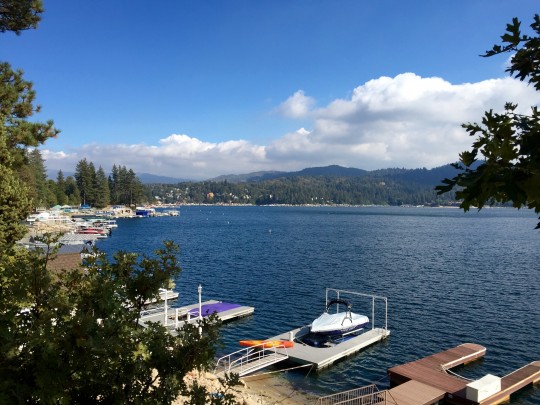Postdoc Roxana Hickey presented “Microbial interactions between humans and the built environment” at the 21st Lake Arrowhead Microbial Genomics meeting held in Lake Arrowhead, California on September 18-22, 2016 (slide deck below). The biannual conference hosted more than 100 scientists and featured a variety of speakers (58% of whom were female!) highlighting research on the human microbiome, disease pathogenesis, population and evolutionary genomics, and cutting-edge omics techniques. Jonathan Eisen (UC Davis), a long-time attendee and promoter of the meeting, chaired a session on the built environment microbiome (Storify here) in which Dr. Hickey presented past and present BioBE research. Other talks in the session included microbial community assembly in cheese manufacturing (Rachel Dutton, UC San Diego), a citizen science study of the highly polluted Gowanus Canal in New York City (Elizabeth Hénaff, Mason lab @ Weill Cornell Medicine), community engagement through microbiome research aboard the International Space Station (David Coil, Eisen lab @ UC Davis), and evolution of biofilm formation in response to rising marine temperature (Alyssa Kent, Adam Martiny lab @ UC Irvine).
David Coil summarized each day of talks at the meeting on the microBEnet blog (day 1, 2, 3 and 4), and Jonathan Eisen created several Storify recaps of #LAGM16 tweets (here, here and here). The meeting was the most Twitter-active I (Roxana Hickey) have attended and contributed to yet, which facilitated active discussions with members both at and away from the meeting.
Here are my main three main takeaways from the meeting:
- Metagenomics (and other ‘omic’ techniques) is gaining strength and popularity for a variety of applications. These include genome reconstruction across whole communities of microorganisms, strain-level diversity and population genomics, functional analyses, and development of targeted therapeutics and rational probiotics. There were very few amplicon-based studies at this meeting (I noticed a similar trend at the International Symposium on Microbial Ecology #ISME16 last month in Montreal). In addition, the tools used to analyze omics data are plentiful and sophisticated. I was especially impressed by work featured from the labs of Eric Alm (MIT), Jill Banfield (UC Berkeley), Kostas Konstantinidis (Georgia Tech), and Adam Phillippy (NIH).
- Many are beating the drum for more reference genomes and cultured isolates. Human-associated bacteria are fairly well-represented in the databases, thanks in large part to the Human Microbiome Project, but for most other environments we have relatively low representation of the resident microbes. This dearth of reference genomes limits our ability to make inferences about the function and ecology of the vast majority of microbes on earth, as was highlighted in a recent update to the tree of life (Hug et al. Nature 2016). More and more scientists are shifting some of their efforts toward cultivation and sequencing of isolates from diverse environments.
- Citizen science and community outreach are increasingly popular and wildly successful approaches to microbiome research. I was really excited to learn about the BKBioreactor Project on the Gowanus Canal (which made use of a community biohacker lab in Brooklyn), Project MERCCURI (which relied on crowdsourcing efforts to send microbes to space), and FijiCOMP (a really cool study looking at microbial transmission among members of a community in Fiji). All of these projects promote open access to data and publications. It got me very excited and thinking about ways to incorporate more public outreach in my own research.
Finally, I would be remiss not to mention the stunning fluorescence microscopy images of dental plaque presented by Jessica Mark Welch (Marine Biological Laboratory) illustrating genus-specific bacterial assemblages in the finest of detail (recently published in PNAS). These images are not only beautiful, but they also provide direct insights into physical interactions between populations of bacteria and inform hypotheses about their possible ecological roles in assembly and succession. Would love to see this technique employed in other microbial habitats!
